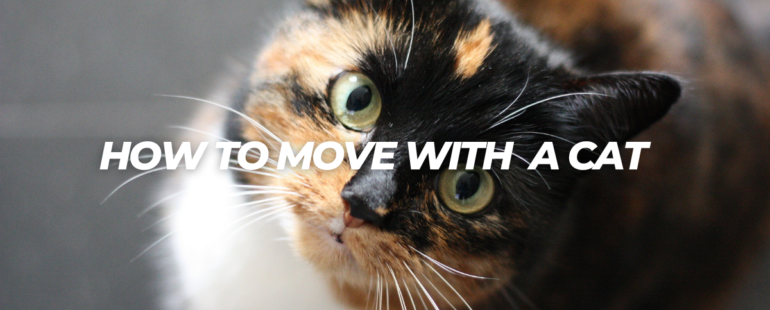
Read about our blog contributors
Cats are homebodies and feel vulnerable when away from home. We suggest planning. Planning can help reduce the stress your cat might experience while moving or settling into a new home.
Moving house with your cat
Moving house is a stressful time for you and your cat. It’s normal to worry about how your cat will cope and how you will make sure that it does not get lost in the new neighborhood.
If you moved locally and the old house is close to the old one, you may worry that your cat will run back! However, if you prepare carefully, you can relocate your cat with little stress and anxiety.
Cat Safety
At the start of the move, set your cat in one room with everything closed so that you know that your cat is secure. Now you can find the cat when it’s time to go. It’s an excellent idea to hang a sign on the door to signal everyone involved to keep the door closed. Feed your cat early but not too close to moving. Fullness during the journey can cause an upset stomach. If your cat is easily frustrated in one room or if you are worried that someone might accidentally let them out, consider booking them into a pet hotel for a day or two.
On arrival, set up a room in the new house to be available as a ‘safe area’ for your cat. Place everyday items such as a bed, scratching post and toys in the safe area. Don’t forget a litter tray, food and water bowls. It’s an excellent idea to provide an old keepsake from the house to remind your cat of the former house. Close all doors and windows to help you and others remember your cat is inside. Remember, a large sign can help. Knowing your cat is secure, you can move everything into and around the house. Let the cat out to explore the place. Just make sure the doors and windows are closed. Try to confine the exploration to a few rooms at a time.
It might be wise to unpack before letting your cat in.
Help your cat settle in after a move.
Ensure your cat feels at home by making the new home smell like their scent. Cats will rub their fur on everything to lay down scent from glands situated mainly on the head and over the body. When a cat feels confident, it will rub scent around the house, increasing feelings of security. New smells might make your cat insecure, but once their aromas are present in the new home, they will feel more comfortable.
Help by getting a soft cotton ball and rubbing it gently around your cat to pick up its scent profile. Tap this cotton ball around the house, so the cat feels welcome and bonds with the new home. Repeat this daily and build up your cat’s scent within the home before letting them outside.
Use food and a routine to help your cat settle in. More frequent meals will initially give you more contact and help reassure your cat that all is well. Knowing when and where feeding will happen will allow your cat to anticipate the meal rather than worry about it. This promotes a feeling of well-being within your pet.
Moving home can be traumatic for a person. Imagine an indoor cat who is not used to dealing with environmental changes. Slow and careful introductions will help the cat settle in.
When to let your cat outside
Keep your cat confined to the house until they are comfortable with their new territory. If you have a confident cat and you feel frustrated keeping them indoors, let them out earlier, but only by a few days. If your cat gets nervous quickly, keep them in for much longer until they feel comfortable in their new neighborhood.
Set some of their used litter around the border of your new garden a few days before you let your cat out. Doing this will assist your cat in feeling more comfortable for its first time outside. This will signal neighboring cats that there is a new cat in the community.
Ensure your cat has a tag or ID with your name, address and contact phone number. Microchipping is suggested. Contact the microchip company and update your contact details if they’re already chipped!
Moving Day!
Choose a day when you can be around to supervise. Before you feed your cat in the am, open the door and allow them access to the outside. Cats are cautious, so they are not likely to run out of the door. Most will decide if it is safe to leave the house and explore their new surroundings slowly and carefully. It might be tempting to pick them up and take them around the garden, but most cats won’t appreciate this and may struggle and panic, even if they are used to being carried in the home. Let them explore by themselves, and don’t worry too much if they hop over a fence or go further than you would like – most cats will return after a few minutes, and you could offer them something tasty to eat.
Confident cats who enjoy the outside generally cope well. Timid cats may take some time to adapt to their new environment, and if you accompany them into the garden during these first few days, it helps build their confidence.
How to stop cats from returning to their old home
Is your new home only a few streets or just a few miles from the old one? Your cat may encounter ancient routes while exploring the area and return ’home’ to the last house along these routes. If this happens, they haven’t bonded enough to break old habits with the new home.
Many cats are encouraged to stay by the new homeowners. They might provide food or toys and a willingness to provide.
Make sure to warn the new residents that you are not moving far and the cat might visit– ask them to call you so you can go and collect the cat. However, if this behavior persists, try:
- Keep your cats from leaving for about a month.
- Increase the frequency of meals and offer tons of attention to build up the bond between you. Start some new routines and signals using food and feeding time that your cat is used to. This way, you can tempt your cat in time for meals – tasty treats can motivate them!
- Furnish your new house with your cat’s scent (see earlier)
- Ensure that no one encourages your cat to stay around your old house by feeding snacks or giving any attention.
- Allow your cat out once a day before a meal so that your cat is motivated to stay around. Making the new home, the center of the new neighborhood is essential. Comfortability might take some time before your cat can be allowed outside unattended.
Traveling with your cat
- Transport your cat in a safe container. These should be available at your local Petco – cats may escape from makeshift carriers.
- If you are moving long distances, you’ll need to ensure that your cat can use the washroom and access water and food. Placing the cat carrier near a secure dog crate during a break is often a good solution. This will provide extra space for a litter tray and keep your cat safely contained.
- When moving, secure the carrier with a seat belt on the seat, or position it in the back so it cannot move.
- Don’t transport the cat in the trunk or in tight spaces.
- On hot days, ensure the car is well-ventilated, and don’t leave the cat without air-conditioning.
- If a short stop is unavoidable, ensure the carrier is secure and always leave the car in the shade with a window open. Be aware of how quickly your cat can heat up. Watch the sun and how your cat is affected by it.
- Ensure your cat wears a snap-type safety collar and tag containing your new and old addresses and contact numbers. Get them microchipped, too. If your cat is sick, wait to travel. Consider sedating your cat if the journey is long or your cat is a poor traveler. In doubt? Reach out to your vet at the earliest opportunity.
- Feed your cat in the morning or as early as possible traveling. Or, you may wait until you arrive at your destination.
